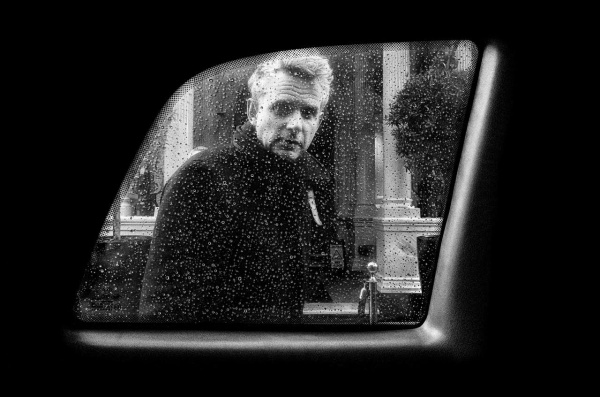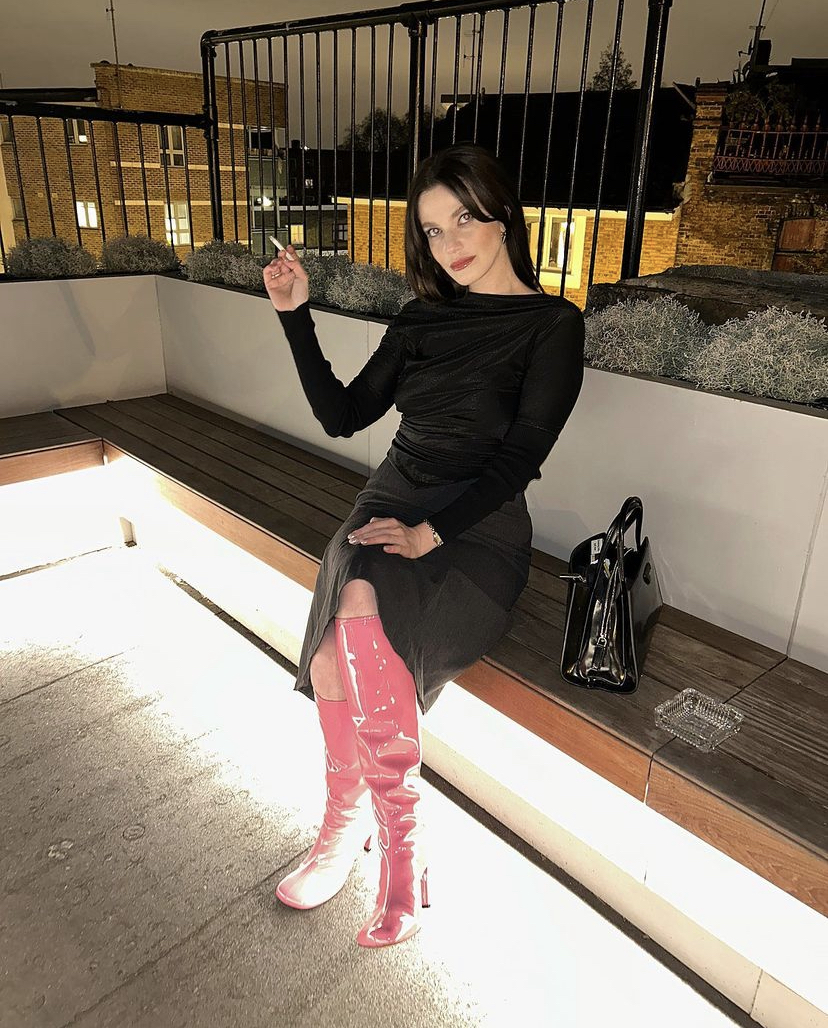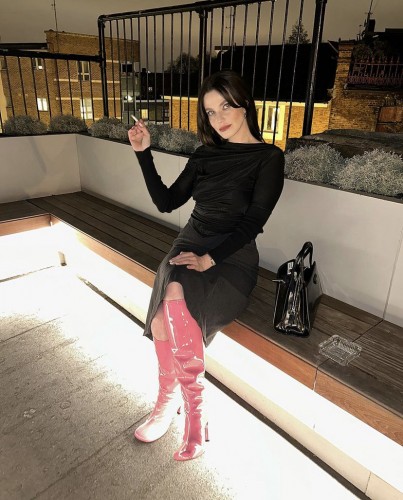Read Time 7 minutes
Historical Heroines: Leonora Carrington, the last OG surrealist
Leonora Carrington’s family nicknamed her Prim, a name amusingly at odds with the character for which she is remembered: free-spirited, rebellious, liberated, non-conforming. They knew her by this name from when she was a child in Lancashire, through her adolescent years first as reluctant society deb, to card-carrying member of the Paris avant-garde, and she continued to be remembered as Prim when she had fled Europe all together, relocated to Mexico, and become something of a family legend/black sheep to those who remained alive. She estranged herself from her family and the tedium of English society life in favour of a love affair with an older, married artist and a life of art, passion, ups and severe downs; all on her own terms. She was reconnected with a distant cousin in the early 2000s, journalist Joanna Moorhead, who published an account of their relationship in her 2017 book The Surreal Life of Leonora Carrington, a romantical and sentimental portrait of a formidable woman, whose archive is now amongst the most highly valued for a female artist, anywhere in the world.
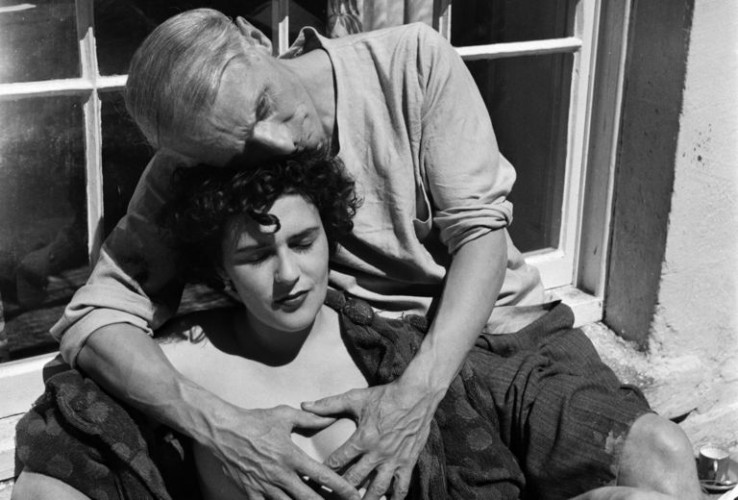
Even as potted a biography as I have outlined above makes the nickname Prim laughable, and we haven’t even got into the details yet.
Often thought of as the last of the OG Surrealists, Leonora only died in 2011. I can’t really think of more surreal an experience than watching the world change so dramatically, from her birth in 1917 to her death, a good decade into the twenty-first century. What a seismic shift to experience, let alone to make art in. Whilst her peers mostly died off between the sixties and eighties, Leonora continued to live and create, tucked away in her dark house in Mexico City, birdlike and frail, but still sharp; as the world became virtually unrecognisable to the one she was born into.
I’m a twentieth century social history fanatic––albeit in a casual don’t-really-remember-dates-but-live-for-the-pics kind of a way––so I feel positively giddy at the idea of imagining what one must have felt as the world shifted and sped up through the course of one’s lifetime. Trench warfare to atom bombs to cold war to drone strikes. Racial segregation to civil rights movement and beyond. Corsets to flappers to mini-skirts to fast, throw-away fashion. All in one lifetime? The compulsion to make fantastical, unsettling, convulsive art is understandable. Leonora’s art was just that.
In both her painting and her writing Leonora danced the line between the physical and dream world, transcribing her own complicated journey through womanhood, lapses in mental health, fantasy and reality. The symbol of the horse is one that reoccurs – often cited as metaphor for the untameable, wild woman, but more specifically for Leonora herself, who was progressive in her feminism and wary of masculine authority, and of being personally stifled by any one man in particular.
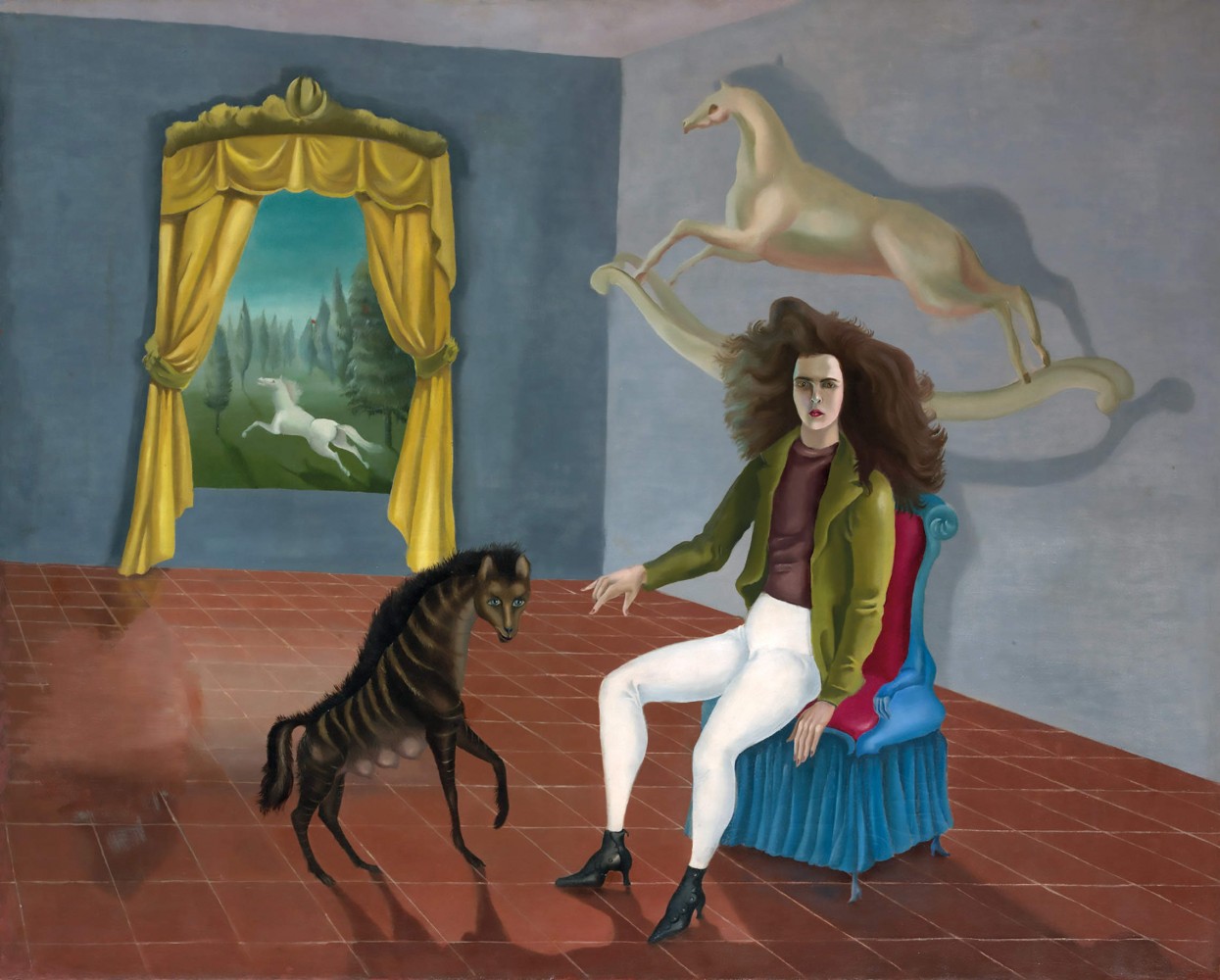
I feel stirred when I look at her paintings, the most famous and recognisable of which (and my fav) is probably Self Portrait (Inn of the Dawn Horse) from 1937-1938. You have to look then look again at this work; it’s the details that make it and it’s full of classic Carringtonian symbolism. Two horses – one mid-canter in a crisp, wooded landscape; one sans tail, mounted on rockers and relegated to life indoors as an ornamental toy, always fixed in one place even when in motion. Leonora herself is there, androgynous with heels and hair and riding clothes, hand outstretched to a full-breasted hyena. It all sounds rather mad on paper, but it’s magical to look at and consider the mind and hands that made it. It hangs in the Met, in New York, and I’ve never seen it except for on a laptop screen or printed in books.
As with Peggy Guggenheim, this column’s previous heroine du jour, it’s the disregard for convention and very proactive personal rebellion that makes Leonora a heroine for me. It goes beyond her output as an artist and becomes about her life, her very existence, the things she did and thought and said. She was tied to various movements, Surrealism of course, Women’s Liberation, the Mexican avant-garde, but I think of her more as a lone wolf [or should that be horse?], somewhat transient and more consumed in the inner workings of her fascinating mind than in the people whose paths she crossed. I might be wrong in that characterisation, of course, but it’s her independence and resourcefulness that inspire me nonetheless.
She is remembered and referred to today as a British-Mexican artist, and Mexico is where she spent the largest portion of her life working, becoming as much a part of the country’s artistic heritage as some native Mexicans, but I want to touch again on the idea of transience. Historically, and especially I think in the twentieth century, revered artists––indeed, any public, creative profiles––are oftentimes tied in our minds to a particular place, like we need to slot them into these fixed geographical coordinates in order to make sense of their work and worldview. In the twenty-first century the world has opened out to us through our phones and computers; I can conjure images of specific streets in small towns a thousand miles away in 0.00006 of a second on Google Earth, and imagine myself there. I can even get there––money, time, and visa permitting––quicker than we’ve ever been able to travel before. Almost nowhere is off limits. It is no longer the case that people are necessarily tied to one location for their whole lives, and international travel is the privilege of the elite. Leonora Carrington was the elite, let’s not make any bones about that, her family were nouveau riche, white British/Irish. But, I don’t know, there’s something about the way she translated her travel and her various homes into her art that I find completely compelling. Chorley, Saint Martin d’Ardèche, Santander, Mexico City. An odd cocktail, but they’re all accounted for in her work in some detail or another. If it wasn’t such a yucky, dry-heave inducing phrase I’d call her a global citizen.
So, not so Prim after all. The opposite in fact. I just love her, she makes me feel so inspired and energised and encouraged to be resilient and to choose the challenge over the easy, less-fulfilling path. That’s a lot to get from someone you’ve never met, isn’t it?
Afterword: Thus far this feature has been two for two on women connected to Max Ernst [a prolific player and fuckboy if ever there was one], but they won’t all be, I promise.
END
subscribe for the latest artist interviews,
historical heronies, or images that made me.
what are you in the mood for?



